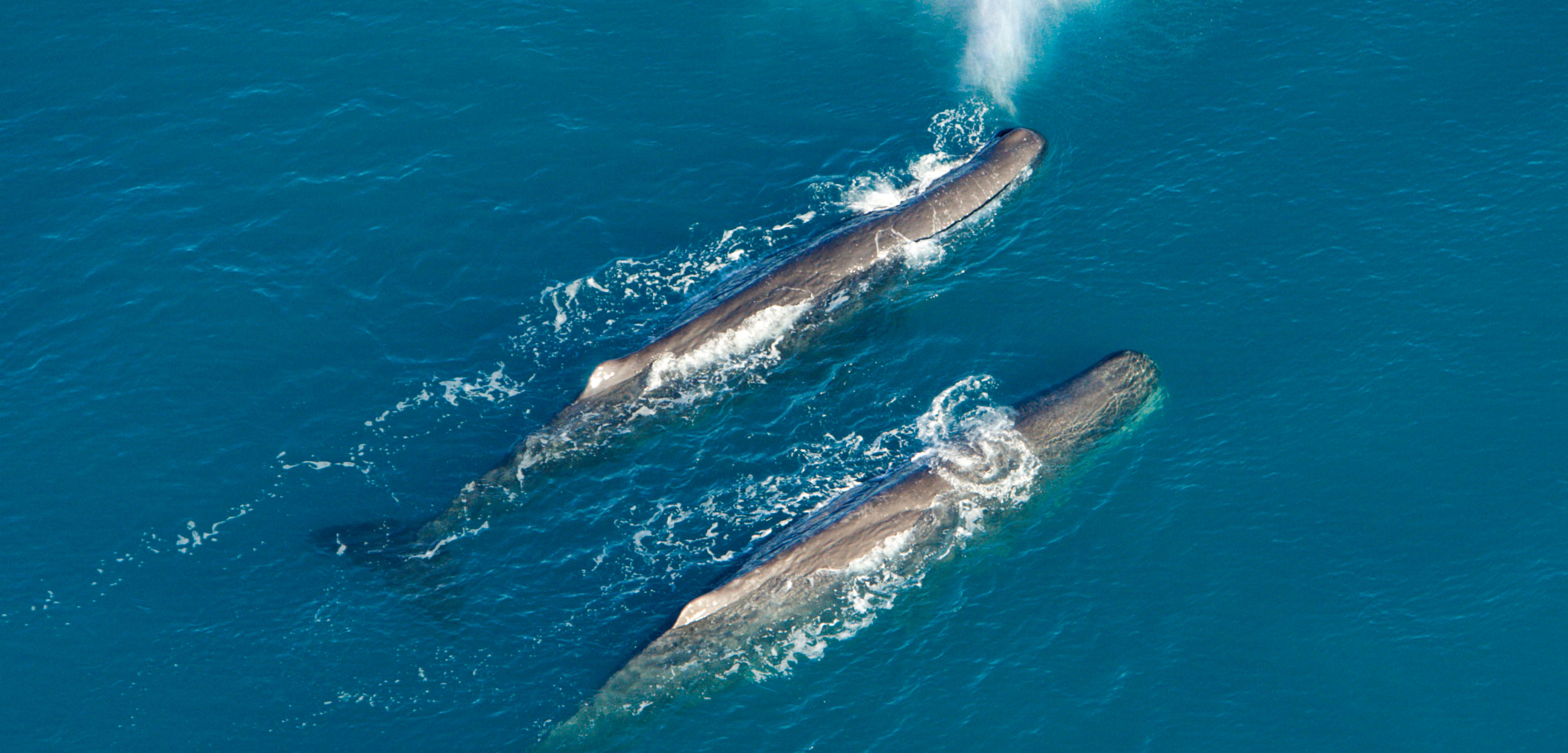The Bro Bonds of Sperm Whales
Whether for survival or for friendship, male sperm whales travel the seas with the boys.
Article body copy
Scientists have long believed that male sperm whales are among nature’s loneliest creatures. Unlike female sperm whales, which spend their entire lives living in matrilineal societies among their female kin, males get kicked out of their mothers’ pods once they reach sexual maturity and then spend the majority of their lives alone. Or so we thought.
A new study has found evidence that male sperm whales can develop strong, long-lasting bonds, forming friendships with other males that can last for at least five years.
The findings of this landmark study are based on 12 years of observations conducted by researchers working in the Nemuro Strait, a narrow stretch of water sandwiched between Hokkaido, in northern Japan, and the southernmost Kuril Island. The strait is visited by dozens* of migrating sperm whales each year. Although male sperm whales have previously been observed feeding together, and even stranding themselves in all-male groups of unrelated individuals, no one knew what was driving them to do so.
To find out, researchers led by Hayao Kobayashi, a sociobiologist at Nagasaki University in Japan, spent thousands of hours aboard whale watching boats photographing 226 male sperm whales and listening in on their conversations using hydrophones.
“It takes a steady effort, extensive data sets, and patience to reveal the ecology of long-life animals,” says Kobayashi. Although the data collection was arduous, it let the researchers determine which whales hung out together, and for how long.
While the majority of the whales spent most of their time alone, some spent at least some of their time in all-male groups or pairs. The scientists’ analysis revealed that nearly 10 percent of the whales studied had one buddy that they spent at least two years in close proximity to. One pair of whale friends, known as NS-PM089 and NS-PM090, were observed together on 10 separate occasions over the course of five years (which is twice as often as I see most of my friends these days).
Although the researchers did not observe any associations that lasted longer than five years, Kobayashi says it’s possible the friendships persisted once the whales left the study area. Long-term relationships between unrelated males “are relatively rare among mammals,” says Kobayashi. The closest thing to the sperm whale’s social structure is that of the African elephant. Like sperm whales, African elephants live in matriarchal groups from which males are expelled upon reaching sexual maturity. Male African elephants usually live alone, but will sometimes form small groups with other males.
No one knows exactly why male sperm whales and African elephants sometimes choose to spend their time with others, but scientists like Kobayashi believe it might improve the animals’ ability to survive. For example, “male sperm whales may hunt more efficiently by sharing information about their prey through echolocation,” he says.
Regardless of whether male sperm whales form friendships to enhance their ability to find food or to stave off loneliness, the fact that they do is yet another example of how similar these animals are to humans says Shane Gero, a behavioral ecologist and cofounder of the Dominica Sperm Whale Project, who was not involved with the study. “Sperm whales spend 80 percent of their time in the dark vastness of the deep ocean—yet their lives are so surprisingly similar to ours.” Just like us, he says, sperm whales have family and friends that support them over the course of their lives.
Kobayashi hopes that his research will help scientists “reveal the evolution of social structures among mammals, including humans.” Although much remains to be learned about how and why humans and whales interact with their own kind, Kobayashi and his colleagues believe that the more we learn about the two species, the more similarities we will find.
*Correction: This used to say hundreds, but has been corrected to dozens.

